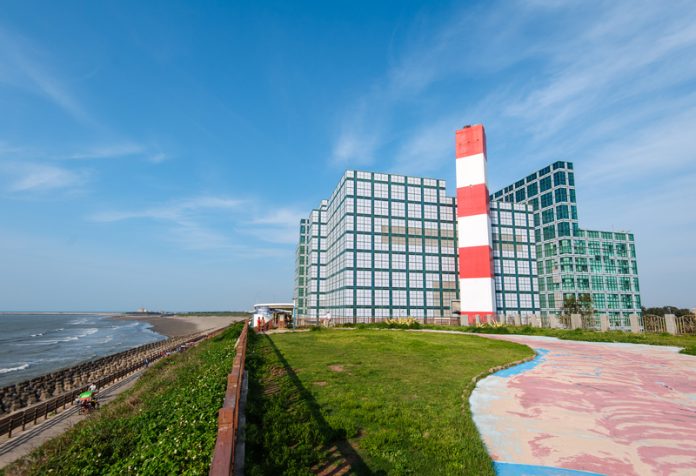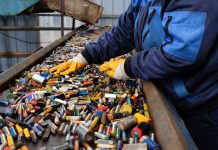The Environmental Protection Administration (Taiwan) charts their efforts when it comes to diversified waste treatment
For general garbage disposal in Taiwan, nearly 60% is recycled while 40% goes for incineration. Challenges include declining efficiency of incinerators as they approach the end of their service lives, offshore island garbage disposal and adequate diversified disposal channels for kitchen waste. In an attempt to improve the efficiency of old incinerators and to diversify treatment options, in June 2017 the Executive Yuan approved the Diversified Waste Treatment Plan proposed by the EPA. It is to be implemented over six years with a budget of NT$15.342 billion from central and local governments.
The Plan has six focus areas: upgrades of incinerator equipment; promotion of regional cooperation; offshore garbage disposal; improving the effectiveness of environmental installations; supervision of garbage clearance and; circular economy policies.
Introduction of new garbage disposal technology and incinerator upgrades and improvements
On 15 May 2018, the EPA held the Symposium on Garbage Incineration Disposal Technology. Professionals from enterprises in relevant fields were invited to talk about incinerator upgrades and improvement, as well as new waste treatment technologies. It was decided that regional platforms could be established to facilitate cooperation in addressing waste treatment problems. Diversified treatment facilities would be set up and the effectiveness of existing facilities improved through economic incentives and other assistance provided to help with the adoption of new technology.
Significant results since 2017 are as follows:
-
Assessment and planning for incinerator upgrades and construction
During the first half of 2018, the EPA invited regional bureaus, operators, and supervising units to attend meetings to promote overall equipment upgrades for incinerators and go over application procedures for future upgrades and needed construction. So far assessment and planning budgets have been approved for nine incinerator upgrades.
Plans for transporting waste from three offshore island counties were approved as well. The EPA also helped counties without incinerators to set up their own diversified disposal facilities.
-
Promotion of regional waste reutilisation facilities
(1) An NT$1.8-billion project is in place to establish, from 2017 to 2022, at least three bioenergy plants using kitchen waste, which is expected to raise kitchen waste disposal capacity to 180,000 tonnes/year and reduce carbon emissions by 17,400 tonnes/year. The project is already in motion with six regional governments, including Taipei City. In addition, construction of Waipu Green Energy Eco Park in Taichung City started on 24 October 2017, with a trial run set for September 2018.
(2) The Environmental Protection Facility Efficiency Improvement objectives of the Plan aimed at lightening incinerator loads by utilising wastes as resources and for energy through measures such as kitchen waste dehydration in pre- and mid-treatment. The EPA approved the establishment of pre-treatment facilities for dehydrating and breaking down kitchen waste, located in Tainan City, Yunlin County, and Yilan County in 2017, and in Kaohsiung City in 2018. This year a high-performance compost treatment facility was also approved to be set up in Lienchiang County. Through these measures, the EPA hopes to increase the efficiency of kitchen waste recycling and reuse, and effectively solve garbage disposal problems. In addition, they should lead to positive carbon reduction outcomes, and keep Taiwan up with international trends.
-
Bottom ash disposal and reuse
Regarding bottom ash disposal and reuse, the EPA completed trials for the reutilsation of granular materials used in the maintenance and construction of road pavement in logistics and storage zones. The Information Management Center for Reutilization of Granular Incinerator Materials has been established to ensure thorough source-to-end controls. Each government department is also asked to start using or to increase the usage of granular incinerator materials in infrastructure projects in order to expand channels for the reutilisation of waste products and promote resource recycling and reuse.
-
Promoting reutilisation of livestock waste as farmland fertilizer
Currently, 211 farms have been approved to send livestock waste for anaerobic fermentation before it is used on farmland as fertilizers. This reduces organic pollution by 5,574 metric tonnes/year, and NT$10.1 billion is also saved as this is equivalent to building 101 gravel contact oxidation treatment facilities. A total of 921,000 metric tonnes of fertilizers are used per year on 819.7 hectares of farmland, including 287 metric tonnes of nitrogen. Together farmers reduce costs on chemical fertilizers of up to NT$13.92 million. To link reutilised products with farmers’ needs, the EPA has held meetings and set up an online platform, that can match over 50,000 tonnes of fertilizers with 468 hectares of usable farmland.
Future outlook
Continuing to carry out the Diversified Waste Treatment Plan, the EPA estimates that after all incinerators are overhauled, the combined increase in treatment capacity will be equivalent to an incinerator that is able to treat 900 metric tonnes/day of waste. The following tasks will also be continually promoted:
- Counties without incinerators will be assisted first to set up diversified local self-operating waste disposal facilities.
- New technology and treatment facilities are encouraged through economic incentives to raise treatment efficiency.
- Industries and new technology are combined to promote industry upgrades and open overseas markets.
- Regions are assisted to set up treatment facilities that utilise kitchen waste for bioenergy in order to improve kitchen waste disposal, open up channels and markets for reutilised products, and promote circular economy policies.
Environmental Protection Administration (Taiwan)
Tel: +886 2 2311 7722











